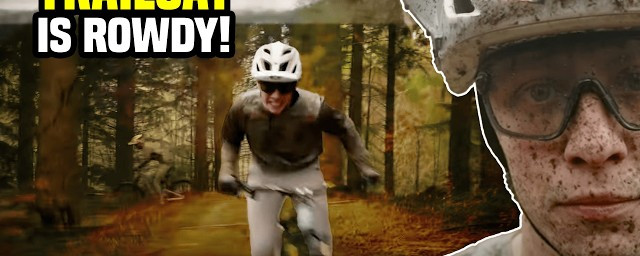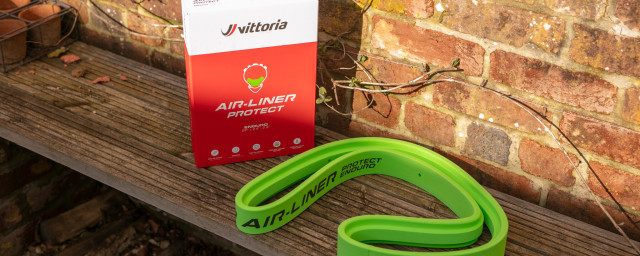Are gravel bikes old-school mountain bikes?

Almost every time we write a piece on a new gravel bike, the comment section is awash with statements like “That's just an old-school mountain bike” — as if it's a terrible thing. But I think that this stark similarity is actually very, very good, and filling an ever-expanding gap left by the fast progression of mountain biking.
Gravel bikes are old school mountain bikes
Before getting anywhere, let’s take a look back at the old-school mountain bike blueprint. If we take a 1995 Kona Cinder Cone for example, it comes with a head angle of 71-degrees, a seat tube angle of 74-degrees. A size 18in comes with a 58.4cm effective top tube. There’s a triple chainset, cantilever brakes, and a flipping long stem. Brakes and chainset aside, those measurements aren’t a stone’s throw away from Vitus’s Substance CRX-1.
And, of course, suspension is now finding a foothold in gravel with forks such as the HiRide Sterra looking remarkably similar to Cannondale’s Headshock tech. Modern gravel bike tech clearly takes inspiration from the mountain bikes of yesteryear
With such similarities, it comes as absolutely no surprise that there are parallels but where things really change is in the quality, performance and sophistication of componentry. Even through the rosiest of tinted glasses, the bikes and components (and some of the suspension platforms, but that’s for another article) weren’t actually very good. Remember V-brakes? Remember how they didn’t stop you in the wet and became even more useless with a buckled wheel? Puckering stuff, when compared to the solid braking of modern hydraulic systems. Early suspension, while groundbreaking at the time, was also pretty naff compared to today’s standard.
Looking at mountain biking in the 80s, 90s and even the noughties, it was vastly different from what it is today. Now, we’re seeing cross-country riders such as Kate Courtney confidently flinging themselves over big road gaps and tumbling down silly rock drops (cough, van der Poel, cough).
Race courses of old weren’t nearly as technical as what we see today. People were larking about in the woods on machines that weren't terribly suitable but they were fun to ride. Now, people are still messing about in the woods but the riding is simply much more technical and suitable for modern mountain bikes. More often than not, you wouldn't want to be chucking a gravel or old-mountain bike down these trails.
Most riders at the time weren’t hitting massive drops and technical features but at the elite level, race tracks were getting progressively more serious and racers needed bikes to cope with the ever more challenging demands. This is what encouraged more progressive bike design, equipping them with more suspension travel and more aggressive geometries, distancing modern bikes from their beginnings. That’s where the humble gravel bike steps in.
The gravel bike is the progression of old-school MTB
This fast progression pushed mountain bike design further, leaving a gaping hole where mountain biking made its first tracks; in the dirt of fire roads and simple singletrack. And that’s exactly where the gravel bike concept makes a case for itself, leaning heavily into the road influence with drop handlebars offering loads of hand positions and a more aero riding position. Essentially taking over from where the old-school mountain left off.
But what gravel as a concept is really doing is improving the experience that old-school mountain bikes used to offer. Aboard a modern gravel bike, you can stop effectively when riding in the rain and you can take full advantage of the greater puncture protection of tubeless tyres. You can even make your ride more comfortable and confident thanks to the range of lightweight, gravel-specific suspension forks and bendy stems on the market. Anything that can reduce buzz in your hands can only be a good thing.
There’s even fancy but reliable electronic shifting. And no longer do you need to deal with the horrendous faff of a front mech looking after three chainrings, thanks to wide-range dinner-plate cassettes. We won’t even get onto what the world of e-gravel can offer.
Canyon’s recent release of the Grizl Throwback is an excellent example of gravel’s nostalgic roots combined with modern tech. It’s a bike that’s cloaked in a 90’s aesthetic with purple anodising and brushed aluminium wheels. It gets contemporary touches such as SRAM AXS XPLR shifting, hydraulic disc brakes and a carbon frame, of course.
But what’s really refreshing is the Canyon's thought process behind the concept: ‘It’s just a 90s mountain bike’. Like me, they say, ‘hell yeah, it is’ and so it should be as there’s only one thing that can provide a ride that harks back to those earlier bikes; gravel.
But my point here is that while there’s absolutely nothing stopping you from thrashing your 1980 Stumpjumper about, gravel bikes of today offer a very similar style of riding but with greater ease of use and efficiency making them generally better for the task at hand. If you don’t like the idea of drop bars, because gravel is such a broad genre, you can easily pick up a bike with flat bars and there are bikes that better suit bikepacking, rather than those older bikes with compact frames.
Gravel is versatile
And then my favourite part about gravel is that it’s not a singular defined genre but rather represents many things to many people. Want to traverse the fire road as quickly as possible? Yep. Want to load the bike up with bags and disappear into the hills for a few days? That’s possible, too. Want to push your skills by throwing the odd bit of singletrack into your rides? Yes, absolutely and you can do all of that on one bike. Perhaps with a tyre change if you want to get pedantic.
Using the recent Mondraker Dusty, a bike at the cutting edge of gravel as an example. While riding it on the press trip, we sampled almost every kind of gravel surface possible. Along a 50km ride, we sampled tarmac, fine gravel and loamy trails I previously only thought would be possible on a mountain bike. Then there’s the technical climbing involved and we won’t get on to the fact it’s an e-bike that allows riders to go further than ever. Although, it is a bike that can accommodate bags and luggage, and can also be taken out for an evening on the hills and tackle ridiculously techy tracks or long stretches of gravel.
Gravel suspension is here to stay, like it or not
As touched on previously, for years brands and riders have been trying to make their gravel bikes more comfortable and, for me, it’s a wonder why gravel-specific suspension forks took so long to come to the market.
Not only does suspension dull down harsh trail buzz but it also boosts grip during a range of situations. The combination of these two makes for a ride that is all-around a load more confident. Suspension forks allow riders to brake harder without fear of losing all-important traction and descend faster as they’re no longer battling vibrations as hard as the rigid equivalent. This all happens while offering a more comfortable front end that staves off fatigue over longer distances.
However, for some, suspension does waver the holistic experience of gravel riding and, if that’s the case, don’t buy a bike with suspension.
Modern gravel biking isn’t just copying the old-school mountain bike blueprint and calling it done. Instead, it’s giving the ideas, mindsets and style of riding left behind by the rapid development of the mountain bike concept a new lease of life thanks to modern technology and progressive mindsets. But because gravel represents many things for many people, it’s allowed a whole new generation of riders (and those that came before) to experience the virtues and purity of the riding that started it all.














6 comments
Old school Mtb with tubeless tyres, clutch mech, 1x groupset disc brakes and bigger wheels. Get back to the feeling of not being over-biked with the safety and reliability of modern-tech
I rode the Dirty Reiver on Saturday. In my part of the field there were indeed quite a few MTBs, I think the pointy end would have been 100% gravel machines as they are simply more aero. Saturday was my 3rd participation since 2016. The 2016 event was a puncture apocalypse as almost everyone was riding tubed wheels (tho not me). By comparison, this event showed far, far fewer people stopped with mechanicals. The bikes and especially the tyres have come a long way in recent years.
I'll be adding my own youtube vid in a day or two - still editing.
I rode the Dirty Reiver on Saturday. In my part of the field there were indeed quite a few MTBs, I think the pointy end would have been 100% gravel machines as they are simply more aero. Saturday was my 3rd participation since 2016. The 2016 event was a puncture apocalypse as almost everyone was riding tubed wheels (tho not me). By comparison, this event showed far, far fewer people stopped with mechanicals. The bikes and especially the tyres have come a long way in recent years.
I'll be adding my own youtube vid in a day or two - still editing.
Yes. They are, specifically, John Tomac's old school mountain bike.
All bikes used to be "gravel" bikes where I grew up in Essex, that's because many of the roads at that time (late 60's early 70's) were unadopted gravel roads and you just had to get on with it, riding whatever your parents could afford. I do admire the industry's ability to morph a whole new market out of sticking knobbly tyres on a road bike.
They're not the same as old school mountain bikes... Watching the recent youtube vids of the Dirty Reiver event, I'd have been wishing for an old school mountain bike over a gravel bike in those conditions!